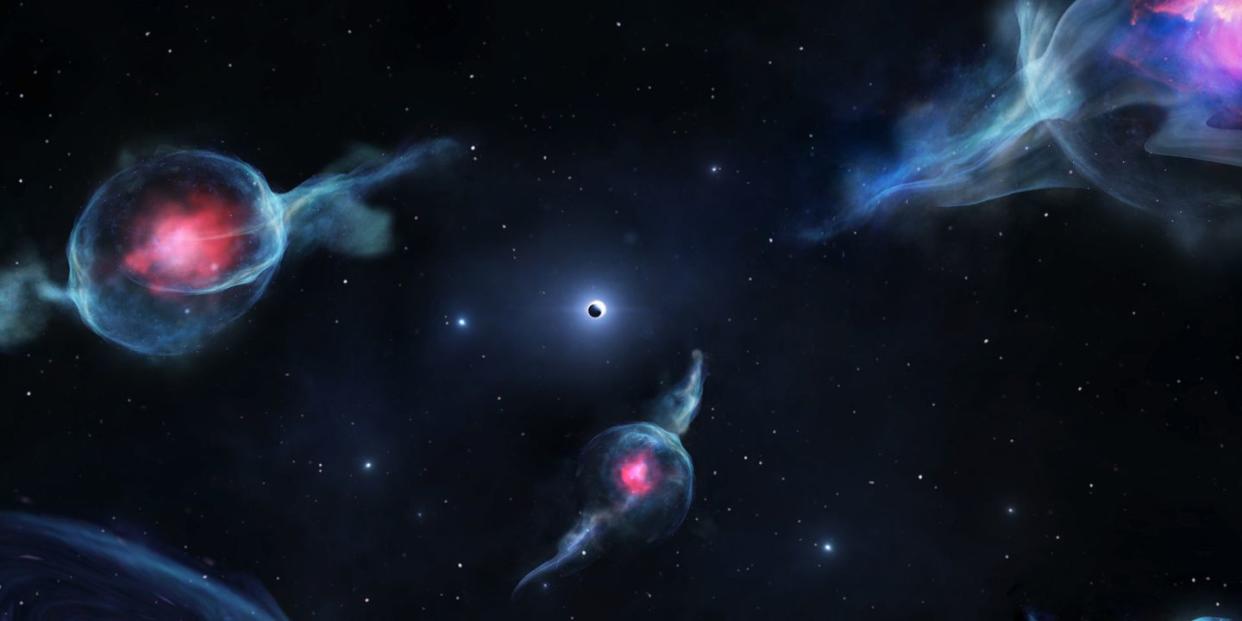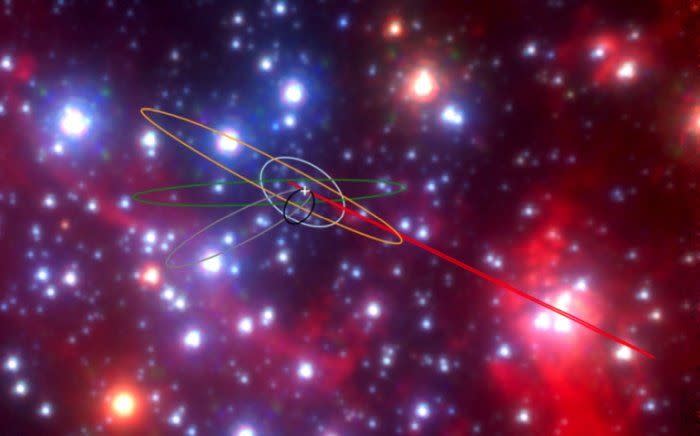Some Weird Gas Balls Are Swirling Around Sagittarius A*

Scientists have discovered a new class of celestial objects orbiting Sagittarius A*, the supermassive black hole at the center of the Milky Way.
The objects behave strangely, like stars, even though their spectrographic images suggest they may just be balls of gas.
Researchers believe they may have formed after two stars within a binary star system merged together to form one big star.
Something weird is happening in the center of our universe.
Researchers have discovered a slew of what they believe to be a brand-spanking-new class of objects—called G objects—circling the Sagittarius A*, the supermassive black hole at the center of the galaxy.
They behave strangely, too—like stars, instead of the clouds of gas to which their spectral signatures point. And when they sweep close to the black hole, their normally compact form begins to warp and stretch. The first sighting of these twisty masses of gas and dust occurred nearly 20 years ago, and researchers have been trying to unravel their secrets since.
Four more of these curious celestial objects have been identified, according to research published this week in the journal Nature. They follow vastly different orbits than the first two objects, G1 and G2, which have orbital periods stretching from 170 years to 1,600 years. The researchers analyzed 13 years worth of data gathered from Keck Observatory on Mauna Kea to better understand how these objects form.

Astronomers may finally have some clues. They observed that when G2 got close to Sagittarius A*, it began to stretch out. “It went from being a pretty innocuous object when it was far from the black hole to one that was really stretched out and distorted at its closest approach and lost its outer shell, and now it's getting more compact again," astrophysicist Andrea Ghez of the University of California, Los Angeles said in a statement.
This means something kept the hazy gas ball intact, despite the enormous force exerted on it by the black hole. Ghez and her team suspect the objects may form from binary star systems, where two stars orbit each other, that collapse into themselves. A massive star may be hiding inside the ball of gas, as a result of the collapse.
Of course, Ghez and her team will continue to search for objects in this exciting new class. The recent batch of evidence suggests they could be more common that astronomers previously believed.
You Might Also Like


